
I unabashedly love the COIN Series from GMT Games! I don’t think that is a secret. I have not tried to hide that affection and am unafraid to stand and testify to its greatness. I have been playing a lot of COIN lately, especially when we travel to conventions such as Buckeye Game Fest, WBC and others. I always have a good time with the series and really enjoy bringing the system to those who are new. Hence the nagging feeling that I have had recently about the need to write this post to evangelize those who are unfamiliar with the system. I own all 11 released volumes in the series, including The British Way, which is in a new series called the COIN Series Multi-Pack, and have played them all multiple times, some solo, some 2-player but more recently as we have started attending more gaming conventions we have been playing them the way they were designed and intended to be played…multiplayer!
In this post, I want to share the 10 reasons why I think the COIN Series is great. Much of this will be factually based in the mechanics, the history, the game play and its asymmetry but some of it will be in the touchy feely side of things and how it makes me feel about history and the different perspective that it has allowed me to obtain through play.
1. Flexibility of the System
One of the hallmarks of any good wargame series is its ability to adapt the system to fit any number of historical situations and conflicts without completely losing the aspects that originally made the system appealing. This flexibility in dealing with different periods, styles of conflicts, geography and philosophy is a true hallmark of the COIN Series. To date, there are 15 volumes covering a wide range of periods and themes including Ancients (Falling Sky and Pendragon), modern warfare (Fire in the Lake, A Distant Plain and Colonial Twilight), World War II (the upcoming China’s War), non violent protests (Gandhi and People Power) as well as Science Fiction (the upcoming Red Dust Rebellion). The series has also had several expansions to these volumes including Ariovistus: A Falling Sky Expansion, Fall of Saigon: A Fire in the Lake Expansion, Sovereign of Discord: A Fire in the Lake Expansion and most recently Resisting Revolution: A Cuba Libre Expansion. In addition to expansions and a bevy of volumes, there has been a few new and ingenious spin off series birthed including the Irregular Conflicts Series and COIN Series Multi-Packs.
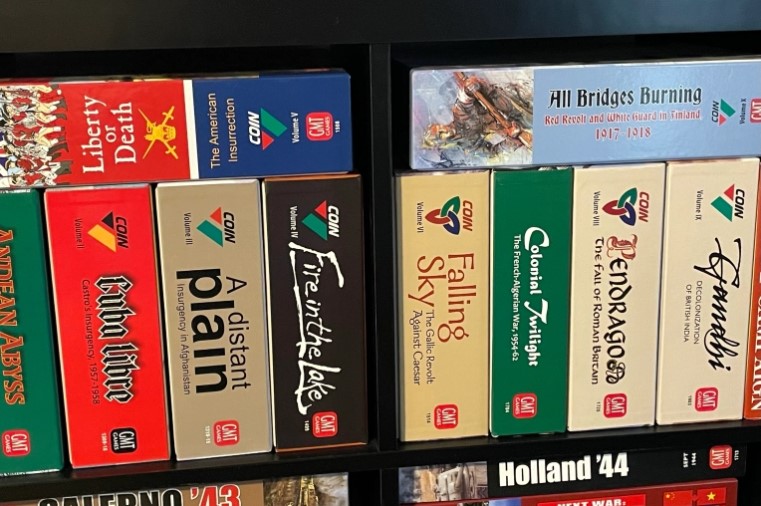
The flexibility and adaptability of the core set of mechanics, namely the concept of hidden or underground guerilla units, multi-faction tension at the table and a realistic and well thought out menu of Actions and Special Activities to create asymmetry in play style and victory conditions, has shown that this series is not a one trick pony. I am continually astonished at the new innovations bought forward with the new volumes. Some of this comes from the necessity of telling the story of different situations and cultures but also because of the different perspectives, experiences and world views of the designers and the COIN Series seems to attract really creative and out of the box thinkers for sure. I truly feel that the system used in the series is only limited by the creativity and ability of the designers to flesh out the involved factions and their motivations and build a framework for how they operate and interact.
2. Card Assisted Mechanic Allows for Historically Accurate Events
I am a fan of history! This was one of my main interests in the COIN Series because they had covered such great periods of history. I have read many biographies of great leaders in the history of the United States and the world as well as about various wars, battles and political struggles. I have found that each of the COIN Series games have accurately captured the period they are describing and have tried to address and cause players to have to deal with the many struggles and difficulties of those times.

One of the ways that these historical aspects and Events are included, even in a small passing way, is by the use of cards to move the game along. The COIN Series is not a Card Driven Game. The reason that this is not considered a CDG is that there are no Operations Points that can be used to fuel actions. What is done in the COIN Series is called Card Assisted and is very different from a CDG. In the COIN Series, cards are used for 2 purposes. One is to determine which of the factions will act first on that card and to set up the order of play for each other faction that round (if the factions are eligible). This is a very interesting design concept as you see the current active Event, as well as the very next Event in the sequence. This visionary advantage allows you to plan your next turn’s moves by passing, taking a Limited Op or other action thereby locking out your opponent from taking the current Event or taking the current Event yourself for its benefit. This is such a glorious part of the game design. It can both be maddeningly frustrating as well as extremely satisfying! The other purposed is to inject the history into the game with an Event that takes into account the period’s history through various Events. Another aspect of the Event Cards that I truly enjoy is that the Events are more often than not, very powerful. They either give you a continuing bonus on future Operations and Special Activities (as in the case of the volumes that include the various Capabilities) or allow you to take Operations and Special Activities more times that round than you would be able to had you not chosen the Event and more often than not, at no cost! Also, because of the power of the cards and their ties to one or more factions, you can take the Event which allows you a huge advantage, only to see that very powerful Event reversed with the next Event or with a regular Operation. This is very frustrating but is one of the major reasons that I love the Card-Assisted element of the COIN Series. Let’s take a look at an example. The “Tribesmen” card allows the US or ARVN player to remove any 4 Insurgent pieces total from spaces with Irregulars.

This card allows the removal of 4 total Insurgent pieces that are located where there are Irregulars such as Rangers. In the below pictures, you can see where there are 3 underground VC guerilla units in the highland province of Binh Dinh and 4 underground VC guerilla units in the lowland province of Quang Tin. Usually, the process of trying to remove the underground VC there would would have taken several turns, one turn to Sweep into the area uncovering the guerilla units making them vulnerable to Assault and the next turn to carry out the Assault Operation to remove the pieces. So this Event is very powerful and allows the player to get done in 1 turn what would have taken several.
With this Event, the US player is able to remove 2 VC from Binh Dinh leaving just 2 guerilla units there with one being underground and the other not and remove 2 VC from Quang Tin leaving just 2 remaining underground guerilla units. Success right? Well yes, in a certain manner of speaking but there are always counters to any actions taken.
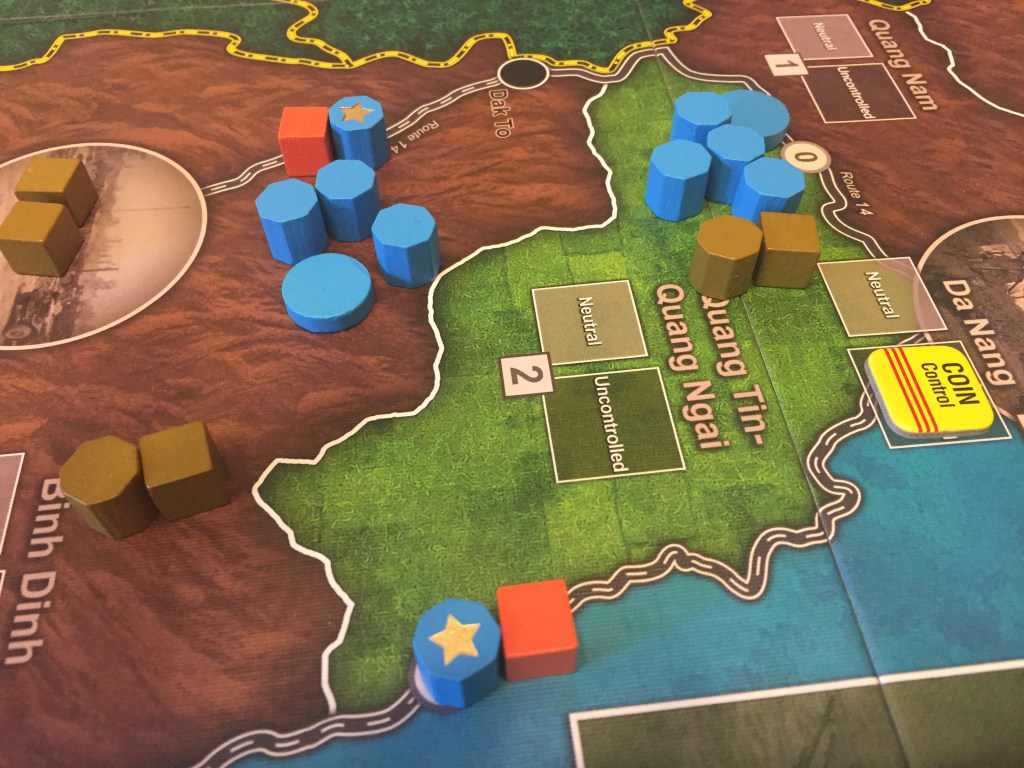
The counter move to this Event was the VC using their Rally Operation to bring in more guerilla units on their next turn, which ended up netting them 1 additional unit in each of the provinces over what they started with (started with 3 hidden guerilla units in Binh Dinh and after Event and their Rally, ended with 4! Started with 4 hidden guerilla units in Quang Tin and after Event and their Rally, ended with 5!). Now isn’t that just the most frustrating thing ever? Would it have been smarter to remove the Bases there which would have limited the ability of the VC to Rally the number of forces they did? I love the decisions and feelings that this game gives of both frustration and disgust but also love that the game design is very flexible and allows for punches and counter punches!

3. Eligibility Track Creates Tough Choices
The Eligibility Track is one of the best parts of the COIN Series. This fantastic mechanism creates tough decisions for players requiring them to consider and weigh what they want to do versus how they should act to maximize their own effort but also potentially deny their opponent. The Sequence of Play area of the boards in the games is where the factions decide what actions they will be taking on their turn. You simply move the faction’s piece onto the 1st Faction space that you choose (either Command Only, Command and Special Activity or Event) followed by your opponent, or you again depending on who is eligible and your player count, placing in turn. This choice will limit what your opponent can do with their eligible faction as it creates a one way path to the next box and takes away access to others.
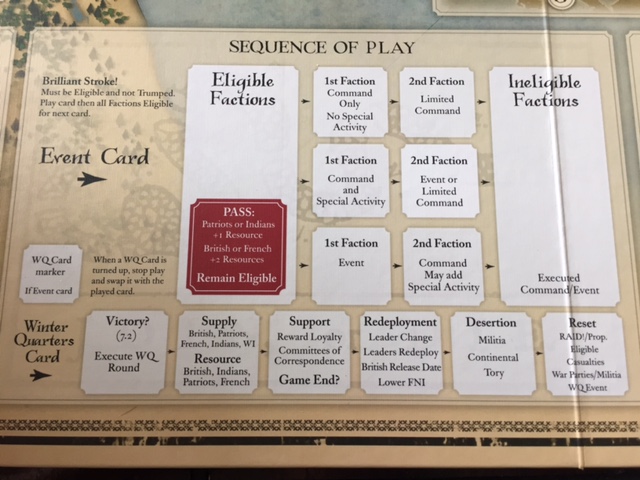
There is some real gamesmanship with this part of the design as you will sometimes want to take an Event because it is so beneficial for your plans or do all that you can with a Command and Special Activity, but there are also times when you might want to play keep away with the Event as it is very devastating to you or not allow your opponent access to the full Command and Special Activity box. This becomes a real game of cat and mouse and can be truly frustrating for one side or the other who has great plans but simply cannot make those plans happen due to skillful negation of the minefield of the track by your opponent.

The other element about Eligibility is that the process has changed over the various volumes and really got a makeover for the 2-player Colonial Twilight. In Colonial Twilight, initiative is determined in a very different method. Rather than a random determination from cards, the actions that you decide to take, while you have the initiative will determine your eligibility for the next round. Pretty slick if you ask me!

As you can see from the picture above, the Initiative Track is designed specifically for 2-players and as such has incorporated a very unique method into its function. Each new round, the FLN player will start as the 1st Eligible, meaning that they will get the first choice of the actions they will take, until that it is, they take an action that causes them to lose the Initiative. First off, you will notice that the various spaces are color coded with the 1st and 2nd Eligible boxes. The light tan spaces are similar to the 1st Eligible box, while the darker gray spaces are aligned with the 2nd Eligible box.
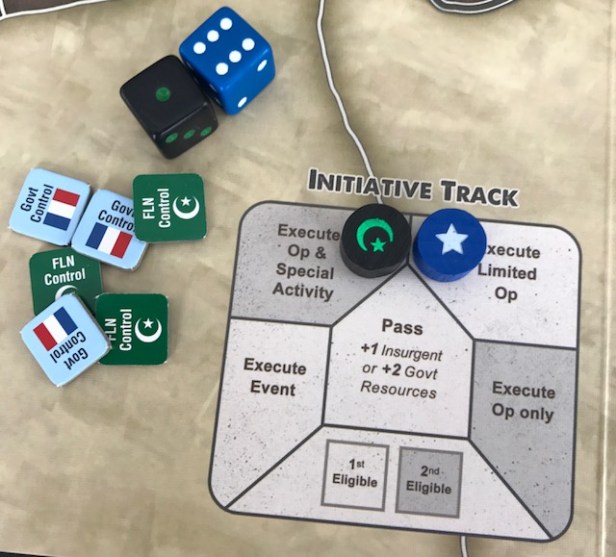
As you can see in this picture, the FLN player has chosen to take the Execute Op & Special Activity space, which will then force him to return to the 2nd Eligible box at the end of the turn. This space is more powerful than say the Execute Limited Op space which only allows for an Op to be taken in one space on the board, as opposed to the full Op which can be taken as many times as you have resources. The neat part of the design of the Initiative Track is that the 2nd Eligible then can only take the actions in a space that is adjacent to the space chosen by the 1st Eligible player. So in this example, the Government player has the choice of three spaces; Execute Event, Pass or Execute Limited Op. After this turn is over, because the FLN player chose the dark tan space with the Execute Op & Special Activity, they will then become the 2nd Eligible player and have effectively lost the initiative. The Government player will now move into the 1st Eligible space and will choose first at the start of the next turn. This mechanic is very well done for a 2-player game and is one of my most favorite parts of the design.

As you can see, the cycle will continue as in the above picture, the Government player now is the 1st Eligible and has the option to choose his actions first. Assuming he chooses the Execute Op & Special Activity space, he will then lose the initiative and become the 2nd Eligible again. This back and forth element of the game is very fun and can become quite strategic. For example, if I am the 1st Eligible, and the Event card that has been drawn from the deck severely damages me or gives the other player a great benefit, I can choose to make that Event impossible for him to take. This is done by simply choosing a space that is not adjacent to the Execute Event space. I can simply take the Execute Limited Op space to effectively block his play of the Event. Sure this action may not be the most efficient for me or give me exactly what I want to do or need to do at that time, but it is a way to strategically keep the initiative and eliminate that negative effect from the Event card. I love this element of the design.
4. Multiplayer Creates Opportunities for Strategizing, Table Talk and Deception and Can Lead to a Serious Strained Relationships between Allies
One of the best parts of the COIN Series is that in a four faction game, typically two factions are “friendly” and share at least one victory condition while their second is related but different. This is an interdependency that players must understand to do well and to have a hope of winning with their faction. In multi-player games, where each faction is being played by a different person, this interdependency and cooperation is also put to the test. These loosely aligned factions have to work together, at least, they have to work together somewhat. This means that they should try to combine their actions and efforts whenever possible in reaching their shared Victory Condition but once it is reached then all bets are off. At that point, players have to start thinking about their secondary Victory Condition and how they plan to get it accomplished. This can mean that the gloves will come off and it can be every man for themselves!
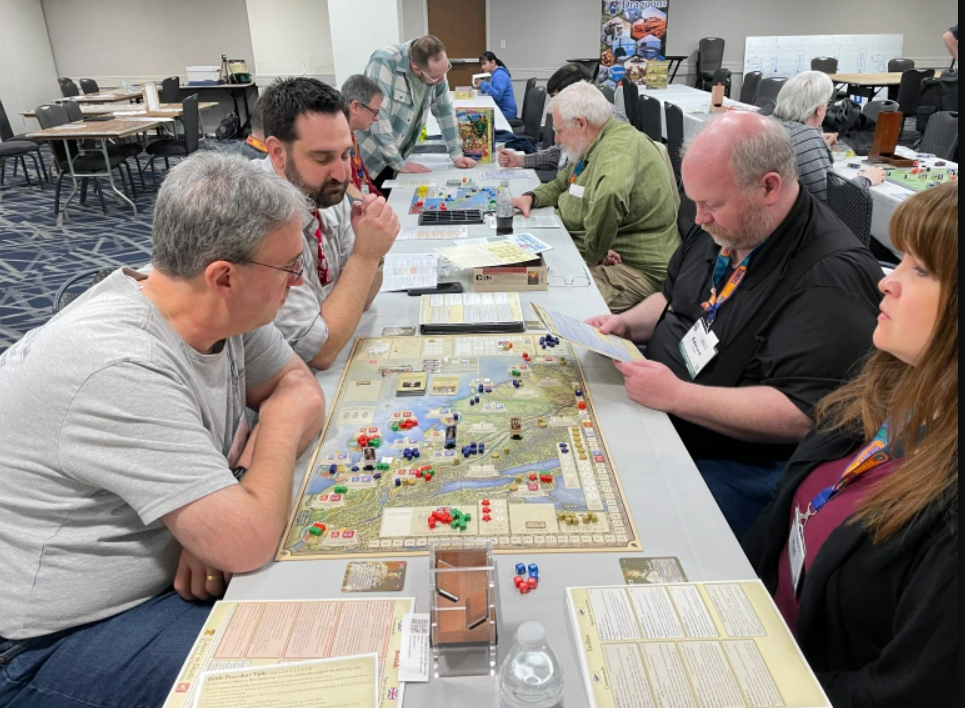
I like the concept of open table talk being welcome in COIN, not only in strategizing or coordinating efforts but also in asking questions about what the other faction is trying to do that turn. This is a great way to learn but also to see how things work together. I also find that this table talk can be used as a bluff or as noise to confuse and bewilder your opponents into questioning their chosen actions. I also think that more in-depth private negotiations away from the table are good and have seen at least a few instances of this that resulted in some good teamwork. It takes some time and practice and comfort with the game and its factions to understand how they can better interact and work together. But once it comes together, there can be some really great interactions that create a real interactive experience…and that is my favorite part about a multiplayer COIN game. Players should also be reminded that they don’t always have to be agreeable in these games. Hard negotiating in order to get what you really need while not giving away the farm is an art!

5. Teaches Rationale and Reasons for Tactics such as Terror and Sabotage
The word terror evokes deep and dark feelings within all of us and an abiding FEAR. Fear of danger, fear of injury, fear of death, fear for our peace and way of life. Terror is a key Operation for the various insurgent factions in the COIN Series as they have a goal of affecting the Support Level for the Government in key cities, colonies and provinces. Typically during a Winter Quarters/Propaganda/Coup phase, the Government will receive Resources using some combination of formula built on the total of their Support. So, placing Terror markers is key for the insurgents as this removes Support and sets spaces to Neutral. The presence of Terror markers during the Support Phase of the Propaganda Round also hampers the Governments ability to build support. Why? Because the locals feel that the Government can’t protect them and this erodes their support. I love the use of Terror when playing as one of the various insurgent factions (FLN, VC, Indians, FARC, AUC, Cartels, 26July, Directorio and Syndicate among many others) as it truly is the only real tool that you have to affect the Government and ultimately win the war. I say that I love using the Terror Ops but I really cringe each time I have to use them as it feels wrong, both morally and ethically, but this is one of the great design elements of the game. Making you think before you act. A lot of times in regular hex and counter wargames, I usually don’t think anything about bombing civilian centers or cities, as there really is no negative effects upon the psyche for doing so. But in several of the volumes in the series the game turns very visceral and emotionally evocative, and the player can actually feel that they have to tread lightly when they are bombing cities as they consider the consequences of their actions through collateral damage.

Terror is used in the COIN Series as a vehicle for the insurgent factions to strike at the Government forces, not through direct conflict, but by creating an environment of fear. It is literally war by other means. Dastardly means. Means born of desperation and due to a lack of other options. Attacking the peace and serenity of the utopia that the Government has tried to create to keep the population under their boot. An attempt to sow the seeds of doubt and dissatisfaction in the protector. To create a crack in the façade, leading to a wavering trust in the ability for the Government to guard against harm. Or at least a little unwillingness to remain in the status quo. It is a visceral tool that is used to sow fear.
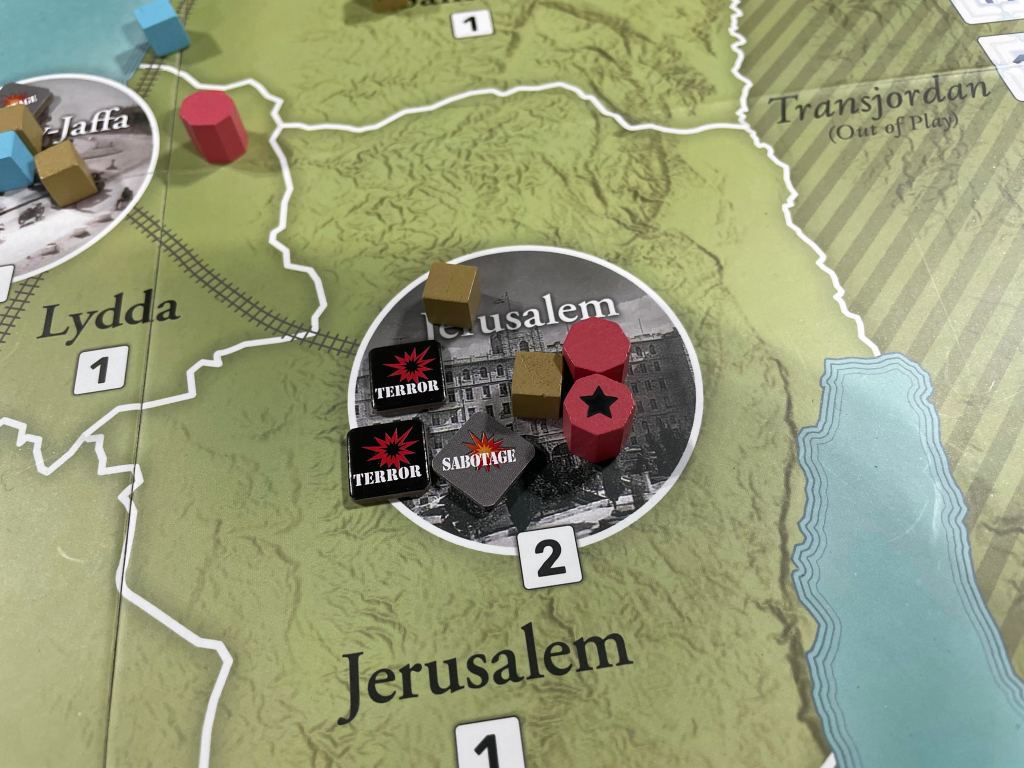
The Terror Operation results in many different benefits for the insurgents including effecting Opposition or Support, locking up resources through the sabotage of Lines of Communication and the placing of Terror markers that will hinder future actions by the Government player to effect the Opposition or Support in that area. While the Indians in Liberty or Death don’t have a specific Command or Special Activity called Terror their Raid operates much the same. Terror and its companion Operation Sabotage are not things that I would every consider doing but as one of the insurgent factions understand their purpose in using the mechanic. I actually really like the contemplation and thought that its inclusion in the COIN Series forces upon me as a player. Sure it won’t be for everyone, and will probably turn some away from playing the game, but it is a reality in our world today and the system helps us to see why.
6. Flexibility of Player Count including Solitaire, 2-Player, 3-Player and 4-Player
Not many traditional wargames allow up to 4 players. While solo or 2-player games are great, it is sometimes difficult to find someone that is willing to invest 4-6 hours into a game, and it does make for some lonely gaming, especially if you are playing solitaire. One of the elements that I really enjoy about the hobby of board gaming is the interaction between many players and being able to see their strategies, learn from their mistakes and successes and make more friends. I am fortunate to have a great gaming group that we call on at anytime to get together but it is hard for us to play traditional 2-player wargames as many are left out of the fun or we have several games going at a time and there is little to no interaction between the group.

This is where COIN Series games excel! They allow solo play or up to 4-players which makes them more playable with large groups. In fact, as I have played Fire in the Lake more, I see that to truly appreciate the game and the complex struggle that the Vietnam War was, you need to have 4 players. This is where the true tension will come out! As in Fire in the Lake, the ARVN can spend US resources and vice versa! How dare you touch my money, said the US/ARVN player! And in Liberty or Death, the Indians can ask for resources but the British don’t have to give them! Great tension is set up in a 3-4 player game that typically won’t exist in a 1-2 player game. While I have had varying levels of success with solo play using the “Bots” in COIN Series games, they are well planned out and the player aid cards provide a clear flowchart of decisions for the Bots. This setup allows for improved solo play over other games on the market.
7. Bridge between Wargames and Euro Games
Hybrids are a good thing. In the biological world, it is the offspring of two plants or animals of different species or varieties, that typically take the best elements of each to make a better creation. In the board gaming world, a hybrid in essence, fulfills the same goal of taking two separate genres and merges them together to make something better than the sum of their parts. For example, taking something as mundane and regularly used as cards and adding that to a more commonly used mechanic in wargames such as area control/area influence. From this merger of 2 generally unused aspects in traditional wargames comes a truly delectable and enjoyable experience in the COIN Series. This has been a more recent design trend in war gaming that is creating a bridge over which traditional Euro gamers have crossed and taken more of an interest in card enhanced war games that base their play experience on traditional Euro mechanics. Blasphemy you are saying? Well, you either have been living under a rock or don’t like change as since around 2011, the hybrid wargame has arrived on the scene and is becoming more accepted by traditional Euro gamers. I am such a case. I love wargames. Have played wargames for many years but went away from them and gravitated more toward the Euro game with their glitz, glamour and simple to grasp mechanics such as dice rolling, hand management and set collection.
Enter 2012. Now bursting onto the scene comes the COIN Series of games from GMT Games that perfectly create a hybrid in the world of gaming where familiar mechanics meet crunchy area control and direct conflict to create a very mild and easy to grasp wargaming experience that has great conversion power. It drew me back in and I am here to stay. I kept seeing tweets about Liberty or Death: The American Insurrection by Harold Buchanan and really felt drawn to this game, mainly due to my love and admiration for the American Revolutionary War and its leaders and history. And when I saw pictures of all those colorful bits, I had to learn more about the game and it system.
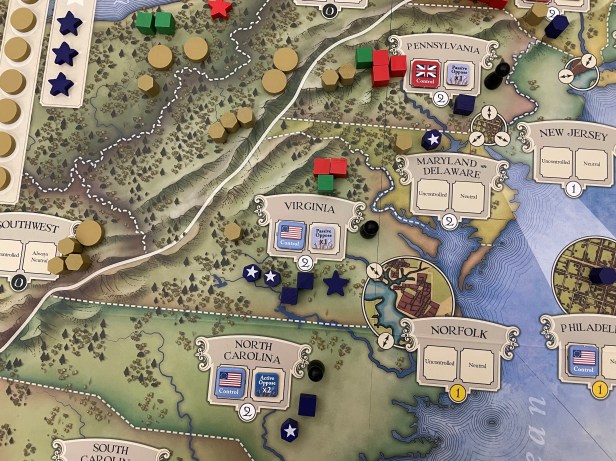
As I researched the game, I found that there were many elements included that I loved in other games such as the use of cards, remember the COIN Series is Card Assisted, and the use of familiar wooden pieces to represent troops, forts and underground insurgent units, rather than square cardboard counters. This appealed to me and was the initial attraction for me. But more than the aesthetic, the system appealed to me because it helped me to understand some of the motivations behind these differing groups and drew me in with its generally easy to understand and simple rules.
Also, the depth of the game really matched with my crunchy personality. As an example of what I am talking about, in Liberty or Death the game is focused on all aspects of the struggle for independence including financing operations with Rabble Rousing, infiltrating British held cities to Skirmish, blockading major cities with the mighty French fleet, Raiding the frontiers with the Indian nations, the spread of propaganda to build support for the revolution, fort building and small scale battles. With this short summary of the major ideas of the game you can see that the design is not a “traditional” wargame but does contain armed conflict. So a game about the American Revolution that isn’t focused on battle you say? How can that be? Well, I will tell you that this game is probably a perfect representation of the multifaceted struggle that wasn’t necessarily decided on the field of combat, but by the little actions of many behind the scenes characters. Yes battle will decide the control of major areas of the board and decide the fate of troops as they must be concerned about being in supply through a network of forts. But the COIN Series and her many volumes are so much more than just rolling some dice and consulting a CRT! Now, before someone gets mad, I love CRT’s and counters and wouldn’t trade them or get rid of them for anything but traditional wargames do not address aspects such as are covered in the COIN Series. Things like propaganda (Liberty or Death and All Bridges Burning), raiding (Liberty or Death), prisoner exchange (Gandhi and The British Way), kidnapping (Andean Abyss), providing bribes with money tokens (Cuba Libre), the use of non-violence to meet goals (Gandhi and People Power), interfactional interaction and shared objectives. These things are what appealed to me as a Euro gamer and I think will ultimately be the bridge over which many a new wargamer will come!

8. Continue to Evolve while Remaining within the Bounds of the System
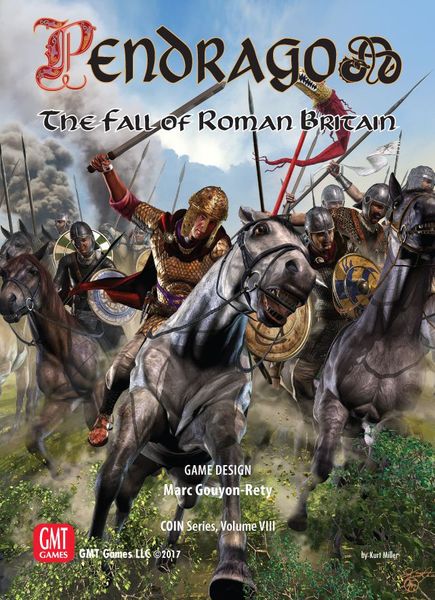
The sign of a great system is its ability to evolve with each volume that comes out. Change, grow, even break new ground and tackle new subjects, regions and historical, or even non-historical situations. We don’t want to see a game that is just a cookie cutter of the original and that recreates the same experience with only a new setting and some new names. An example of what I am talking about is the very excellent Volume VIII Pendragon: The Fall of Roman Britain, which covers insurgency but more in a subtle and small scale way with minor revolts and internal rebellions marred by squabbling. This is not to say that this volume doesn’t contain any counterinsurgency as they are still internal rebellions depicted but the larger focus of this game is on migratory conquest and internal Roman stresses that are not really about rebellion. Some might ask how this doesn’t water down the system or change the focus? And the answer would be that it doesn’t.
There is no cause to see Pendragon and its portrayal of insurgency and counterinsurgency themes as watered down, however. Rather it is expansion of the system and exploration of how the general themes fit into other historical happenings. There is plenty of room for classic insurgency and modern guerrilla warfare, such as in the volume immediately preceding Pendragon, Brian Train’s Colonial Twilight, which gives it opinion and take on 1950’s Algeria and the French and FLN’s struggle for control. The designer Morgane Gouyon-Rety has explained several times, including in our very own designer interviews here on the blog, why she found the COIN Series a good host for the design’s topic of the Fall of Roman Britain. Mainly the fact that the game engine’s accommodation of asymmetric ends, ways, and means, which tell the narrative of a multi-factional and internal war as well as political, economic, and cultural clash interwoven between traditional military campaigns.
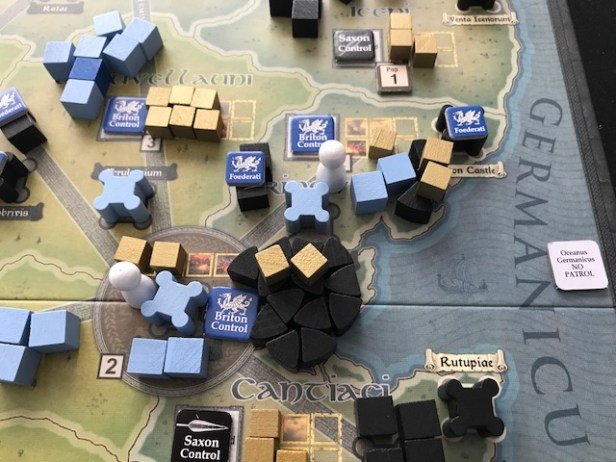
To quote the COIN Series creator Volko Ruhnke on this topic:
I use the positive connotation of “exploration” to emphasize the need in any Series for the addition of variety as each volume is added. In an upcoming C3i magazine article (issue Nr30), I attempt to dissent the requirements for variety in the Series—and the inherent danger that you note of not remaining sufficiently true to the original form. The upshot is that a series stretching eight or more volumes must both reward initial investment in learning the system and provide ever greater departures to make playing yet one more game in the series worthwhile.
As to whether the newer COIN Series volumes will remain “true” to its beginnings, I will have to leave that to players. The proof of the pudding will be in the eating: if volumes VII, VIII, IX continue to satisfy those who stand by the Series, then so be it!
The COIN Series is a fertile ground where designer’s imaginations and ingenuity can be tested and tried and the best volumes will rise to the top and be published to end up on our gaming tables to be put to the test to answer the question about whether the series is still to be found within but also if what has been changed and adapted is worthy of the system.
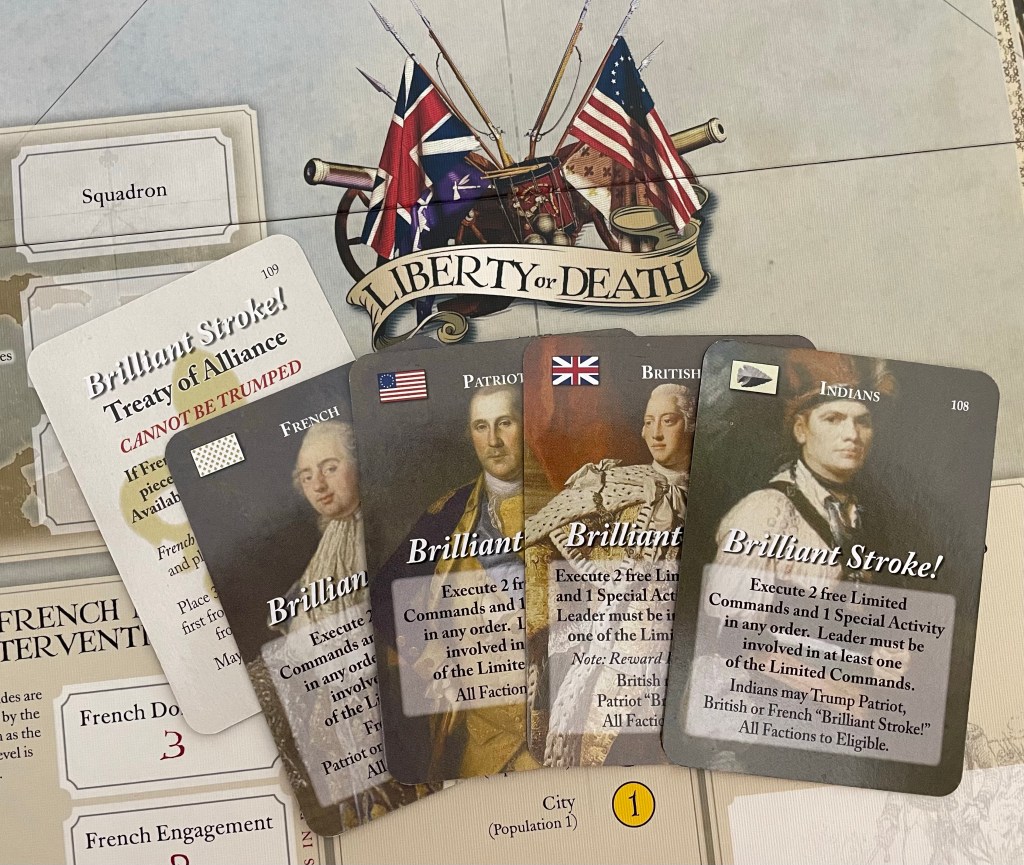
Another really interesting proof for this thesis is the inclusion of Brilliant Stroke Cards. Brilliant Strokes were were first introduced in Liberty or Death providing specific capabilities that can be used to trump an Event Card in play. The mechanism was designed to allow each player to utilize their current leader to deliver an earth shattering blow to the enemy once per game. Additionally there was a hierarchy of Brilliant Stroke Cards built into the mechanics to ensure that one side can trump another side’s Brilliant Stroke. In the end, the inclusion of the mechanic is a threat that each player possesses and a threat to each player’s strategy.

9. Fun and Frustrating at the Same Time
I enjoy a game that tests me. A game that keeps me interested because I am trying to formulate and execute a workable strategy. A game that tests my ability to negotiate and think like the enemy. A game that creates meaningful player interaction and provides me with quandaries and decisions about how to take my turn. I also love a game that absolutely frustrates the heck out of me! And the COIN Series does all of those things to me.
The system creates a very interesting and fun environment where players can work together or against each other and ultimately will see one player coming out on top. The concept of working together as long as it is necessary and convenient but then letting my teeth show when it is no longer mutually beneficial to work together. But this interfactional dynamic also creates real frustration. Such as when your ally simply doesn’t work together with you.
It also creates some real hair pulling moments when your plans just didn’t work out and your enemy simply undoes what it was that you just did to them. But, I love this because the old CDG maxim of “well, he didn’t do what he wanted to do, as he was spending his time undoing what I did to him” holds true.
In the end, I find the COIN Series very enjoyable to play. Yes it is challenging, and sometimes takes multiple plays just to get an idea for what your faction is supposed to be doing. But the system is solid and is designed to be an experience and I love that about the games.

10. Production Value of Boards, Cards and Playing Pieces is Stunning
I have always been a sucker for a good looking, well made game. If that game has multi-colored wooden cubes and pieces (like the COIN Series), lots of thick, well made cards with great art or pictures (like the COIN Series) and well laid out boards or maps (you guessed it, like the COIN Series), then I am generally interested in that game and will consider purchasing. In fact, I am always leery of any board game that sells for under $50 as I have to wonder about the quality and how they skimped on that quality to keep the game under $50. So for a price value and for quality components, COIN Series games are hard to beat.

The production value of the COIN Series is really top notch! The designers and artists are held to a very high standard and they have to date created some of the most gorgeous looking games on the market. These production levels really create a great thematic immersion point for players, and more often than not, are the first point of attraction.
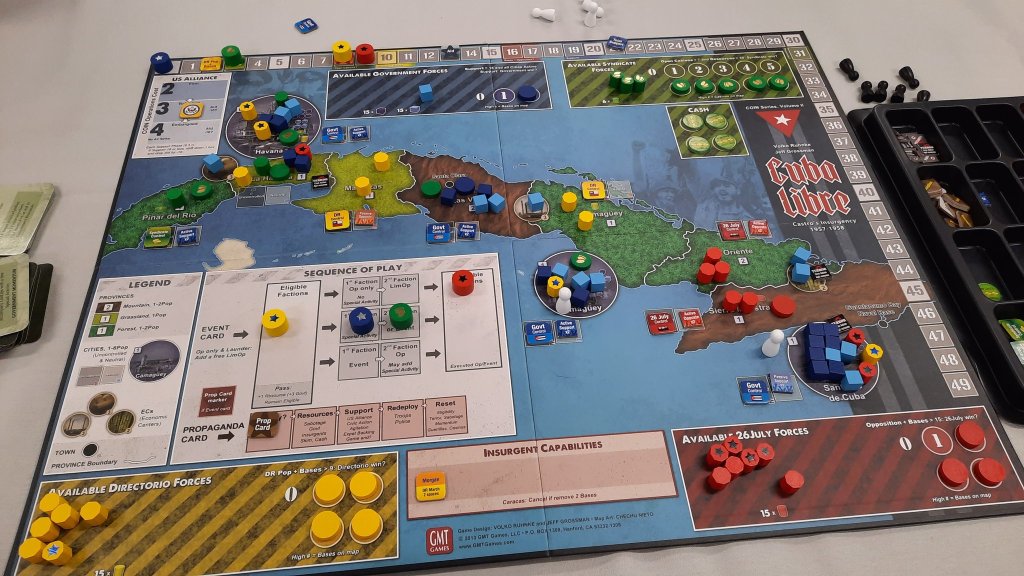
I could probably go on and on about my affinity and admiration for the COIN Series but I hope you have enjoyed my thoughts on this great series, and didn’t give up reading halfway through. I am not an expert on this system. Not by a long shot. But I have played a lot and experienced all of the different games in the series and have had such great and memorable experiences with friends sitting about the table that I wanted to share that love so that you too might come to enjoy the series as much as I do!
Please let me know what you love or even hate about the COIN Series! I would love to hear your feedback.
-Grant
Here are some reference materials for the various volumes in the COIN Series including reviews and some of our videos.
Review of Liberty or Death – https://theplayersaid.com/2017/03/01/turning-the-wargaming-world-upside-down-a-review-of-liberty-or-death-the-american-insurrection-by-gmt-games/
COIN Series Game Ranking Video – https://theplayersaid.com/2019/06/29/coin-games-ranking-be-mad-in-the-comments-edition/
Review of Cuba Libre – https://theplayersaid.com/2016/05/25/history-will-absolve-me-cuba-libres-unique-take-on-the-coin-system-and-why-it-feels-so-great-to-play/
First Impressions for The British Way – https://theplayersaid.com/2023/04/18/first-impressions-coin-series-multi-pack-i-the-british-way-counterinsurgency-at-the-end-of-empire-from-gmt-games/
Review of Colonial Twilight – https://theplayersaid.com/2017/10/24/a-perfect-modeling-of-chaos-and-terror-a-review-of-colonial-twilight-the-french-algerian-war-1954-62-from-gmt-games/
Faction Function Video for Andean Abyss – FARC – https://www.youtube.com/watch?v=EJadsi086Dk&t=47s
Faction Function Video for Andean Abyss – AUC – https://www.youtube.com/watch?v=FTpVBLartP8&t=18s
Faction Function Video for Andean Abyss – Government – https://www.youtube.com/watch?v=imYw7TWY2zQ&t=14s
Faction Function Video for Andean Abyss – Cartels – https://www.youtube.com/watch?v=sq8oMf7rwRM&t=16s

Great review and article. Which COIN game contains Jerusalem? I don’t have that one. thanks
LikeLiked by 1 person
It is Palestine in the new The British Way which is the first COIN Series Multi-Pack.
LikeLike
Thanks Grant! Excellent write-up on the COIN series. The series is one of my favorites as well, and like you I have all of them, including expansions. I think you and Alexander need to do another ranking of the games. It’s been too long since the last one. Perhaps you could rank them for 4 vs for 2 vs solo? There are many solo players out there.
LikeLiked by 1 person
We are working on a new ranking video now. Our Monthly Debrief video which drops tomorrow will be a discussion about the COIN Series.
LikeLike
Fantastic! I’m looking forward to it!
Perhaps reveal each game as you go during the video instead of all at once. I like the suspense. haha
LikeLiked by 1 person
Do they ever get any easier to play? I confess that I’m relatively new to the system (but not to wargaming), but I can’t think of any other system where I spend as much time in the rules or reading each of my operation options in detail every time I take a turn…not to mention trying to figure out a winning strategy!
LikeLiked by 1 person
They do get easier with plays. It is a complex system and tying your actions to a strategy will take time to develop.
LikeLike
Thanks. I suspect the multiplayer versions are the most entertaining but I’m cutting my teeth on a two player FITL an The British Way campaign.
LikeLiked by 1 person
Yes, they do get easier with multiple plays. Rulebook checks can be intense early on – we’ve all been there! However each game becomes more rewarding too.
From personal experience, I tend to approach each COIN figuring out which is the Government and main Insurgent factions (FARC in AA, July26 in CL, NPA in PP, etc). The core mechanics/goals of these tend to be similar so you only need to focus on what’s different.
Secondly, early on when learning ignore the events… get familiar with the basic Operations. Each faction usually has an Op+SA combo you want to hit repeatedly. – also ties in with its strategy. Once you’re familiar with the Ops then the events make more sense too.
One of the best ways I’ve found is to set a COIN game up and play it fully solo following the bots. This will give you a sense of what each faction’s strategic priority is.
Lastly, reading the historical background / designer notes will help place thematic context for WHY each faction is doing stuff.
It’s an incredibly rewarding gaming experience.
LikeLiked by 2 people
I never fully understood why someone interested in military history wants to play euro games.
Or even wargames with euro game mechanics.
I CAN understand that wargamers like thematic games because these games also tell stories and are adventure like. Arkham Horror games for example…
But dry euro mechanics where you try to win on points by moving pawns on a rather abstract board to win over another player … that is simply not the reason why I played these military simulations for 45 years already.
COINS are eurogames and their “history” is limited to one or two lines of text with an historical picture included.
But … in NO way is Cuba Libre a simulation of the Cuba revolution or will Falling Sky give you an actual historical recount of what really happened some 2000 years ago.
It is the end result of playing games instead of simulations. You might as well play Viticulture or Ticket to Ride and calling these simulations of “something”.
Nope they are not. Just good games to enjoy the ride of gaming and … winning.
And as a simulation gamer, winning is the least that I search for in a good simulation or historical (solo) wargame.
I guess it is the new boardgamegeek inspired generation where the next trend is mixing deck building with ASL and worker placement mechanics with fire fights.
Good for a time passing, but you will hardly learn any historical lessons from it like many other thematic games.
Of course some people will love eurogames and COINS and some will not, but the MAIN attraction for me has always been what happened at Waterloo, Omaha beach or could have happened.
Not to push pawns over a board to win a game with a thin layer of alternate history.
Good write up but not everyone wants euros in his simulations. 😏
LikeLiked by 1 person
There are all kinds of ways to enjoy history. I love hex and counter too but it doesn’t ever deal with the other aspects of war like negotiation, terror, partisans, etc. COIN includes those elements. I will still play hex and counter and love a good odds based CRT but I like COIN as well. Thanks for reading.
LikeLike
The Playbooks do contain historical information about each card thus enriching the historical understanding of the players.
LikeLiked by 1 person
You could also argue that some wargamers looking for simulations seem to treat war as if it was Go; decisions within ridgid rules. Adding dice rolls doesn’t tell a story by itself. War is a bloody mess of uncertainties. More importantly, the actual armed conflict is only one part of the war.
Anyway, for me it doesn’t matter if the game is a hex and counter or COIN or something else. If well executed they all can be a good tool to understand some aspects, while not being a simulation. Doing research while playing is very satisfying. I think you can be a wargamer while not limiting yourself to military history.
All said, I’m just as fascinated by how math and mechanics can produce satisfying scenarios.
LikeLiked by 1 person
I shied away from COIN system as did not seem enough War in the games for me, but I was eventually enticed by FITL and found that it had a lot more war and historical flavour/teaching to it than I expected and combined with excellent gameplay. Have never played a Euro so no real idea as to how these compare other than in grneral terms ? I now have several COIN titles and enjoy them greatly (some more than others and some newer games just dont appeal such as People Power). In many ways they are a hybrid form of CDG which are most assuredly wargames. Not replacements for any other form of wargame (be it hex and counter or CDG or Zonal such as Storm Over Arnhem) just an alternative style and subject matter. But to each their own applies I guess.
LikeLiked by 1 person
Very well written explanation. You had already sold me to try a few (LoD, TBW, PP), but these 10 reasons certainly solidify why this is a great series — especially as a crossover for some of my Euro-game friends. Cheers!
LikeLiked by 1 person
Thanks. I’m glad I found it as it definitely was a bridge for me.
LikeLike
I first discovered COIN in June 2022, when someone was selling Colonial Twilight and Gandhi used. I had read a bit about them, and was attracted by the aesthetics of the wooden bits and the history behind the games, so I decided to take the plunge and try them. Just over a year later, and I now own every single one, and their expansions, and have the upcoming ones on pre-order. In other words, “I fell in love” with the games! Not only are their aesthetics just beautiful and the history they tell utterly fascinating, but the mechanics of the tough decisions, and the “there’s never enough time to do what I want to do”, and the frustration of having 2 great cards come out back to back and you have to choose which one to use! I just love it. Thanks for this great article, Grant! I’d love to play with you one day!
LikeLiked by 1 person
Glad to hear you are a devotee now like the rest of us! Absolutely would love to play sometime.
LikeLiked by 1 person
Just bought my 3rd COIN game (People Power after already having A Distant Plain and Liberty or Death). Haven’t played any of them yet (1 play of Colonial Twilight and Cuba Libre though) but your enthusiasm for them is infectious
LikeLiked by 2 people
Great news Dave! I probably go over the top but I just love the series so much.
LikeLiked by 1 person
I only recently discovered COIN games having been primarily a Eurogamer myself. It started with Cuba Libre but the discovery of your Youtube channel as well as this blog led me down the rabbit hole of wargaming. I agree that the COIN system is excellent and has so much variety across the different games in the system while providing a window into so much history that I otherwise would never have even been aware of. I can’t wait for A Fading Star to come out for this reason as I know very little about the history of Somalia.
Recently, I have been looking into the Levy & Campaign series which seem to have a much higher barrier to entry but are also something completely different to what has been done in boardgames before.
You and Alexander often talk about your love for COIN games and while you have done a number of reviews on L&C games, I would be interested to know how your journey with them has been going and if you see yourselves becoming as fond of them as you are of the COIN games.
LikeLike
The best part of COIN is the Barbarian…
I think you pretty much summed up all the reasons so many enjoy COIN games. I wish the barrier to entry (learning to play a COIN game) was easier, but once you’ve played a couple, they aren’t bad to pick up.
I also wish GMT would put a section in the rules for “COIN players” that pointed out the major/minor differences (like whether recruiting can come from deployed bits or not, whether the next card is shown, etc).
Lastly, with so many COIN games out the past few years, you and Alexander need to revisit your COIN ranking
LikeLiked by 1 person